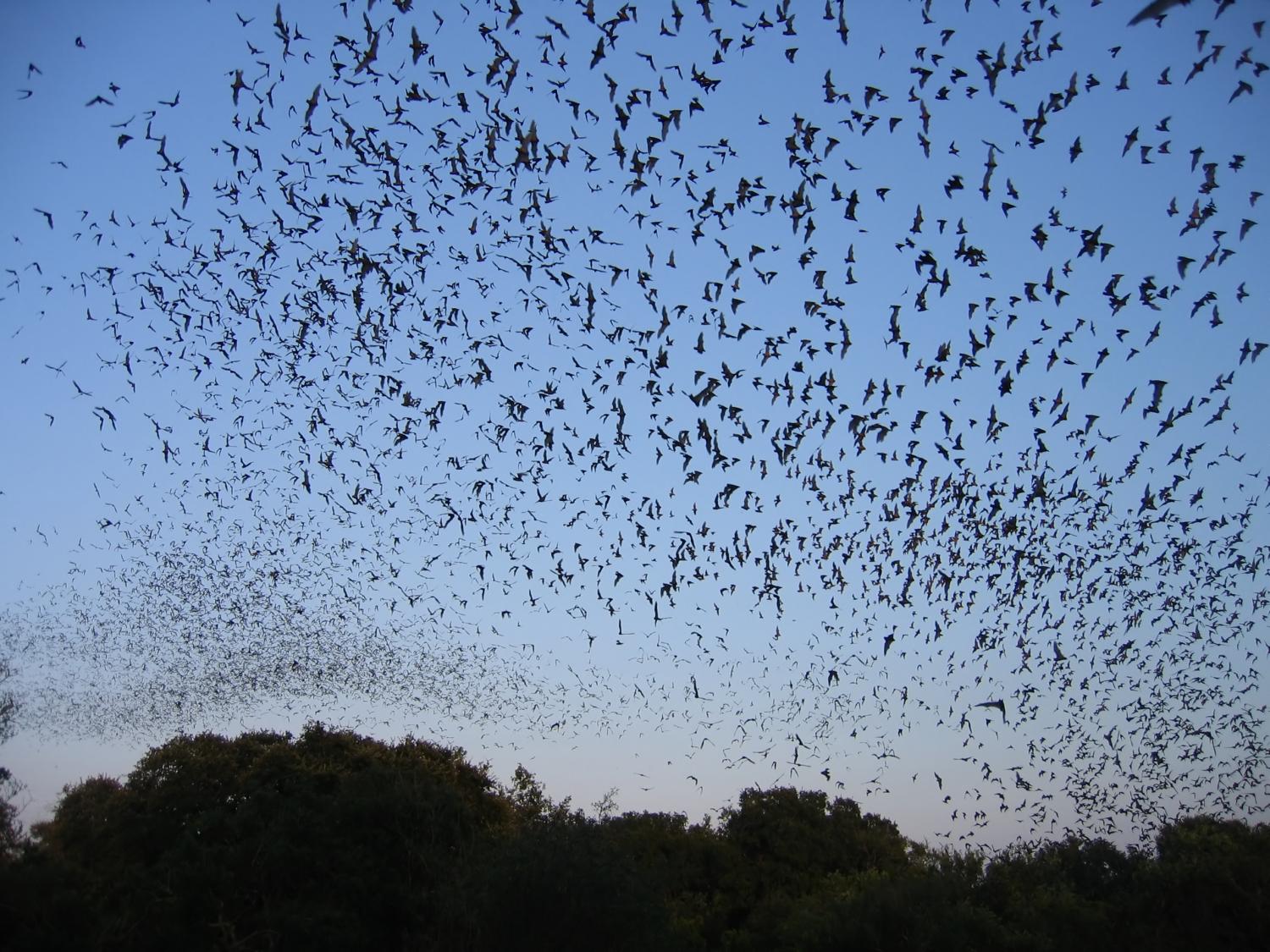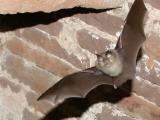In the week and a half since scientists announced they had found a fragment of virus in a bat that seemed to match the Middle East respiratory syndrome coronavirus (MERS-CoV), many have raised questions about whether the fragment really was from the same virus that is striking people in Saudi Arabia and elsewhere in the Middle East.
The discovery was reported by a team of US and Saudi scientists, who said that a fecal sample from one Egyptian tomb bat (Taphosouz perforatus) in Saudi Arabia yielded a 190-nucleotide fragment that was a 100% match for the MERS-CoV from the first human case in the country. The sample was collected 12 kilometers from the man's home.
But the doubters say that the piece of genome was so small that, even though the sequence was a match for the corresponding piece of MERS-CoV, it might represent only a related virus. The MERS-CoV genome consists of about 30,000 nucleotides.
Among other points, critics also observe that the fragment came from a fecal sample, not from blood or a throat swab, opening the possibility that the virus was in something the bat swallowed. Questions also have been raised about the assay the scientists used.
The meaning of the bat finding has been a hot topic because no one knows where the MERS-CoV exists in nature or how it makes its way into humans. The virus is known to be a close relative of other coronaviruses found in bats, but last week's report was the first finding that seemed to clearly point to bats as the source—or at least one source—of the pathogen.
The finding was the result of two sample-collection campaigns in Saudi Arabia by the scientists, last October and April of this year. The team was led by W. Ian Lipkin, MD, of Columbia University, a famed virus hunter, and it included Ziad Memish, MD, Saudi Arabia's deputy minister of public health and its lead spokesman on MERS.
In their Aug 21 report in Emerging Infectious Diseases, the team noted that the package of frozen samples they shipped to the United States last October was inadvertently opened at a US customs station and sat at room temperature for 48 hours. The resultant thawing damaged the samples and limited the amount of material suitable for testing, the team has said. They were unable to recover any other genetic material than the 190-nucleotide piece.
The European Centre for Disease Prevention and Control (ECDC) pointed out several limitations of the reported findings in a fairly short statement this week.
"The amplified bat MERS-CoV sequence was very short and lies within a conserved region of the genome," the ECDC said, meaning a part of the genome that's much the same in related strains. Other parts of the viral DNA might not have matched MERS-CoV so closely, it said.
Also, the agency said a newly established MERS-CoV assay was used to amplify the viral fragment, which led to the finding of a 100% match, but MERS-CoV assays recommended by the World Health Organization yielded negative results.
In addition, all the coronavirus sequences the team detected came from fecal pellets or feces collected under bat roosts, not from serum, throat swabs, or urine, the ECDC said. Still another observation was that the report did not include information about the viral load of the positive sample, "and the failure of further sequencing might lead to the speculation of a very low virus load in the sample."
Virologist Vincent Racaniello, PhD, author of Virology Blog and professor of microbiology and immunology at Columbia University, also has talked about limitations of the study. In his blog, he took exception to a press report that portrayed the findings as clearly demonstrating that MERS-CoV originated in bats.
The finding is "not enough to prove that you've identified the source of the MERS-CoV," he told CIDRAP News. "It's a 190-nucleotide piece and it's in one bat. Every virologist I've spoken with agrees that it's not sufficient to establish the reservoir of the virus."
Racaniello said he didn't think the finding was the result of contamination in the lab, because Lipkin is very careful and doesn't have any MERS-CoV sequences in his lab. "I think something related to the virus was in the bat, but where it came from we have no way of knowing," he added.
If MERS-CoV was replicating in the bat, more of its genetic material should've been found, he said.
He raised the possibility that the virus was in an insect that the bat had eaten. Although coronaviruses are not associated with insects, the bat might have consumed an insect that had taken a meal from an infected animal, he suggested.
Another possibility is that the DNA fragment represented a recombinant virus that has one gene related to MERS-CoV, Racaniello said. "The point is that there are alternative explanations. Until you rule those out with good data, you can't conclude that the source was a bat."
For comparison, he cited the SARS (severe acute respiratory syndrome) virus, which was traced to bats. Scientists isolated the virus from bats, obtained its whole genome sequence, and identified antibodies and viral RNA in bats, he said.
"If they could do that for MERS-CoV, I'd be convinced, but it's just very preliminary," he added.
Another expert, Andrew Rambaut, PhD, of the University of Edinburgh, compared the sequence found in the bat with sequences from other available MERS-CoV isolates. Writing in the blog "Epidemic: Molecular Epidemiology and Evolution of Viral Pathogens," he said he found that while the bat sequence is identical to the same sequence from the Saudi Arabian human isolate the team used, it differed by one nucleotide from five other MERS-CoV isolates.
Rambaut also used some assumptions about the rate of viral evolution to estimate the likelihood that the sequence in question could be identical in two different viral strains that descended from a common ancestor. He concluded that viruses that diverged from one ancestor as long as 8 years ago would still have a 5% chance of being identical in the sequence in question.
"So although this fragment means a very close relative of the human MERS-CoV is found in a bat geographically close to the first case, the fact it is identical in this short region doesn't mean that these bats are the direct source of the human case," Rambaut wrote.
Katie Ballering, PhD, a microbiologist and senior scientist with the BioWatch team at the University of Minnesota's Center for Infectious Disease Research and Policy, which publishes CIDRAP News, said she shares the view of many that the finding must be interpreted cautiously.
"To me it seems like an additional piece of circumstantial evidence," she said. “It's easy to have so much trust in the results you produce that you slightly overstate the conclusions supported by the data that you have currently, and that's perhaps what happened here."
On the other hand, Ballering said she feels that people "are kind of beating up on this [research] group." There is no simple way to hunt for the animal source of the virus, she added. "You're looking for a needle in a haystack, and at some level, given no magic needle-finding radar, you're going to have to pull that haystack apart piece by piece."
To prove that MERS-CoV exists in bats, it will ultimately be necessary to isolate the virus from bats and culture it, she said. And even if scientists can show clearly that MERS-CoV lives in bats, there will still be much to learn about the virus and how it infects people, she observed.
"I guess I'd agree about looking at this with caution, but I would extend it to say that there's going to be a whole ton more we need to understand before we know the whole life story," she said.
See also:
Aug 27 ECDC statement
Racaniello's Aug 22 Virology Blog post
Rambaut's Aug 22 blog post
Aug 21 CIDRAP News story on bat finding


















